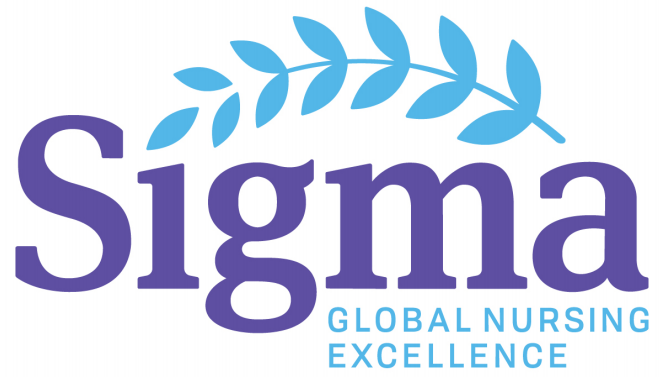Presenter Classification
Graduate Student
Presentation Type
Poster Presentation
Publication Date
4-11-2024
Start Date
11-4-2024 2:10 PM
End Date
11-4-2024 2:45 PM
Keywords
change in hospital routines, sleep in post-surgery patients, improved hospital sleep, recovery after cardiac surgery
Abstract Type
Quality Improvement/Process Improvement Project
Abstract
Purpose: Restoring Effective Sleep Time in Post Cardiac Surgery Patients: A Quality Improvement Project
Brooke Watts, BSN, RN, DNP Student, Murray State University
Dr. Kristin Reid, DNP, APRN, ACNS-BC, DNP Program Director/Assistant Professor Murray State University
Aims: This quality improvement project was developed using DNP project guidelines provided through Murray State University and was designed to improve sleep in hospitalized cardiac surgery patients.
Processes: IRB approval was obtained from the healthcare institution and academic institution. This two-phase quality improvement project was designed to analyze the effects of a change in normalized hospital routines on self-reported sleep in post-cardiac surgery patients. Phase one involved no change in unit nursing routines to draw baseline data. Phase two involved the quality improvement intervention where routine patient assessments and vital signs were executed at 11:00 p.m., and at 04:00 a.m. Any non-timed lab work or routine radiological studies were postponed until after 04:00am. Patient participation for both phase one (n=4) and phase two (n=3) were determined by exclusion criteria. The Richards Campbell Sleep Questionnaire (RCSQ) was utilized for data collection and patients were asked to complete the questionnaire daily.
Results: Comparison of mean patient-reported sleep scores between the pre-intervention and intervention groups showed a positive association between the quality improvement intervention and patient reported sleep.
Limitations: Limitations for this project included a small sample size in both phases. IRB stipulations required a low-risk profile which limited eligible participants. There was a limited timeframe for project execution due to time required for IRB approval and to meet course-related timelines. The project was further limited by lack of on-site dedicated project staff overseeing qualifying patient enrollment.
Conclusions: Key findings were in alignment with sleep-related findings in comparable studies and projects where unit routines were adjusted. Execution of similar projects should occur to provide more substantial evidence supporting this quality change. With evidence of this project in mind, providers and nurses can practice mindfully and incorporate creative approaches to safely care for patients and improve sleep.
Headshot
Included in
Cardiology Commons, Other Nursing Commons, Sleep Medicine Commons
Restoring Effective Sleep Time in Post Cardiac Surgery Patients: A Quality Improvement Project
Purpose: Restoring Effective Sleep Time in Post Cardiac Surgery Patients: A Quality Improvement Project
Brooke Watts, BSN, RN, DNP Student, Murray State University
Dr. Kristin Reid, DNP, APRN, ACNS-BC, DNP Program Director/Assistant Professor Murray State University
Aims: This quality improvement project was developed using DNP project guidelines provided through Murray State University and was designed to improve sleep in hospitalized cardiac surgery patients.
Processes: IRB approval was obtained from the healthcare institution and academic institution. This two-phase quality improvement project was designed to analyze the effects of a change in normalized hospital routines on self-reported sleep in post-cardiac surgery patients. Phase one involved no change in unit nursing routines to draw baseline data. Phase two involved the quality improvement intervention where routine patient assessments and vital signs were executed at 11:00 p.m., and at 04:00 a.m. Any non-timed lab work or routine radiological studies were postponed until after 04:00am. Patient participation for both phase one (n=4) and phase two (n=3) were determined by exclusion criteria. The Richards Campbell Sleep Questionnaire (RCSQ) was utilized for data collection and patients were asked to complete the questionnaire daily.
Results: Comparison of mean patient-reported sleep scores between the pre-intervention and intervention groups showed a positive association between the quality improvement intervention and patient reported sleep.
Limitations: Limitations for this project included a small sample size in both phases. IRB stipulations required a low-risk profile which limited eligible participants. There was a limited timeframe for project execution due to time required for IRB approval and to meet course-related timelines. The project was further limited by lack of on-site dedicated project staff overseeing qualifying patient enrollment.
Conclusions: Key findings were in alignment with sleep-related findings in comparable studies and projects where unit routines were adjusted. Execution of similar projects should occur to provide more substantial evidence supporting this quality change. With evidence of this project in mind, providers and nurses can practice mindfully and incorporate creative approaches to safely care for patients and improve sleep.



